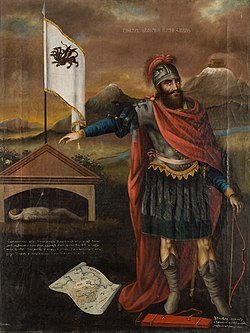
Back النهضة القومية الأرمنية Arabic بیداری ملی ارمنی Persian Հայոց ազգային վերածնունդ Armenian Kebangkitan nasional Armenia ID Армянское национальное возрождение Russian Вірменське національне відродження Ukrainian Armenia bîn-cho̍k kak-chhéⁿ ZH-MIN-NAN
This article has multiple issues. Please help improve it or discuss these issues on the talk page. (Learn how and when to remove these messages)
|
The Armenian national awakening paralleled the rise of nationalism among other non-Turkish ethnic groups during the late Ottoman Empire. The Ottoman Empire sought to counter Armenian nationalism during the Tanzimat era, initially through the promotion of Ottomanism and later by transforming the empire into a constitutional monarchy during the First Constitutional Era. However, the reorganization of the millets—the legal courts for confessional communities—exacerbated the issue of dualism within the Ottoman state.
During the Armenian national awakening, Sultan Abdul Aziz sanctioned the promulgation of a basic law for the Gregorian Armenian Millet, protecting Armenian rights and privileges. This corresponded with the opening of an Armenian National Assembly, which took over responsibility of temporal matters from the Armenian Patriarchate. Armenian Ottomans operated their own courts of law, collected their own taxes, and maintained their own prisons, hospitals, and schools. As a result, some observers noted that the Armenian community functioned in many ways like a state within a state. Over the course of Ottoman Armenia, the some Armenians began to advocate for republicanism rather than allegiance to the Ottoman Dynasty, with some being interested in becoming an autonomous region for themselves. During the Second Constitutional Era, parties like the Social Democrat Hunchakian Party (Hunchaks), Armenian Democratic Liberal Party (Ramgavar Party or Armenakan), and Armenian Revolutionary Federation (Dashnaks) were the main representatives of Armenian interests in the Ottoman government, while sometimes also using violence to defend their constituents. After World War I and the Armenian genocide, the First Armenian Republic declared independence from the Ottoman Empire.
© MMXXIII Rich X Search. We shall prevail. All rights reserved. Rich X Search
